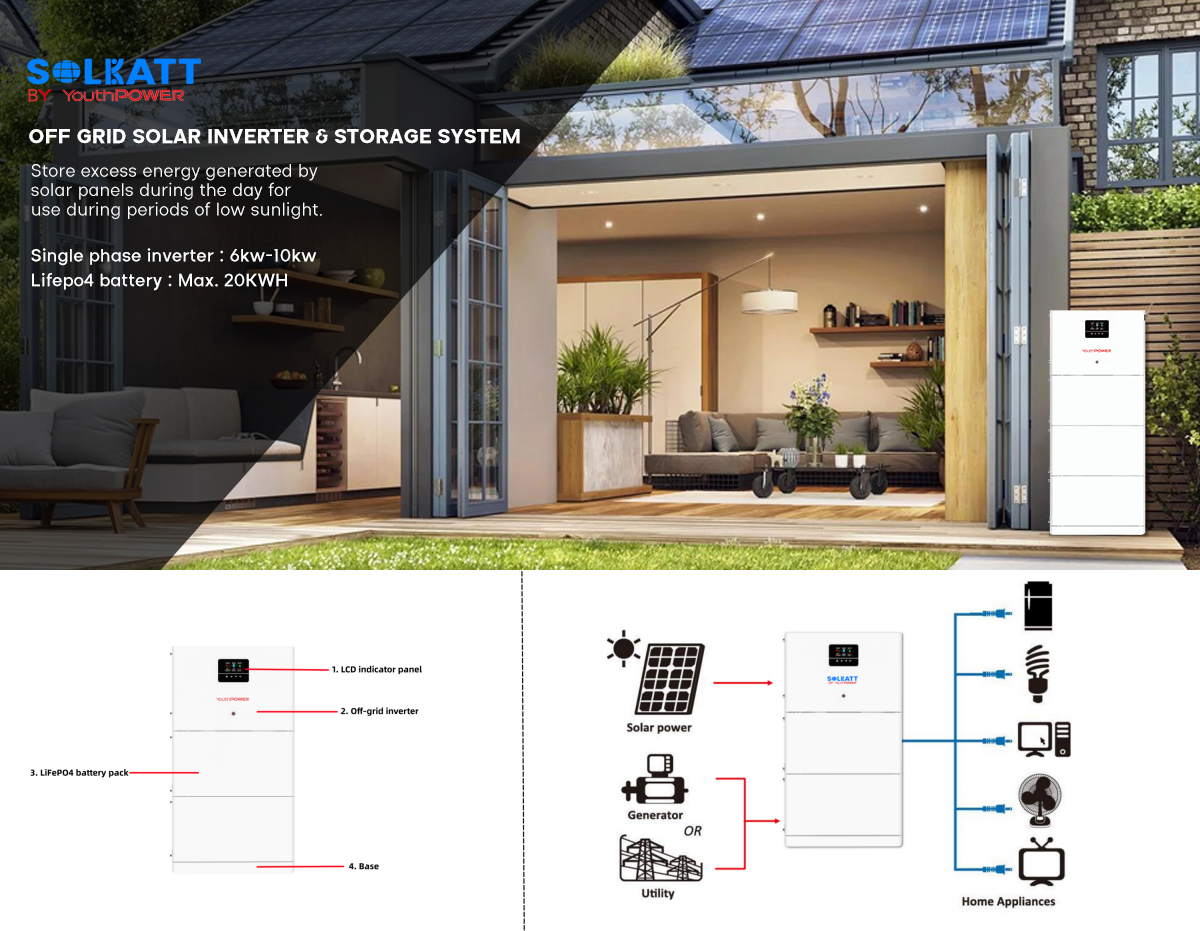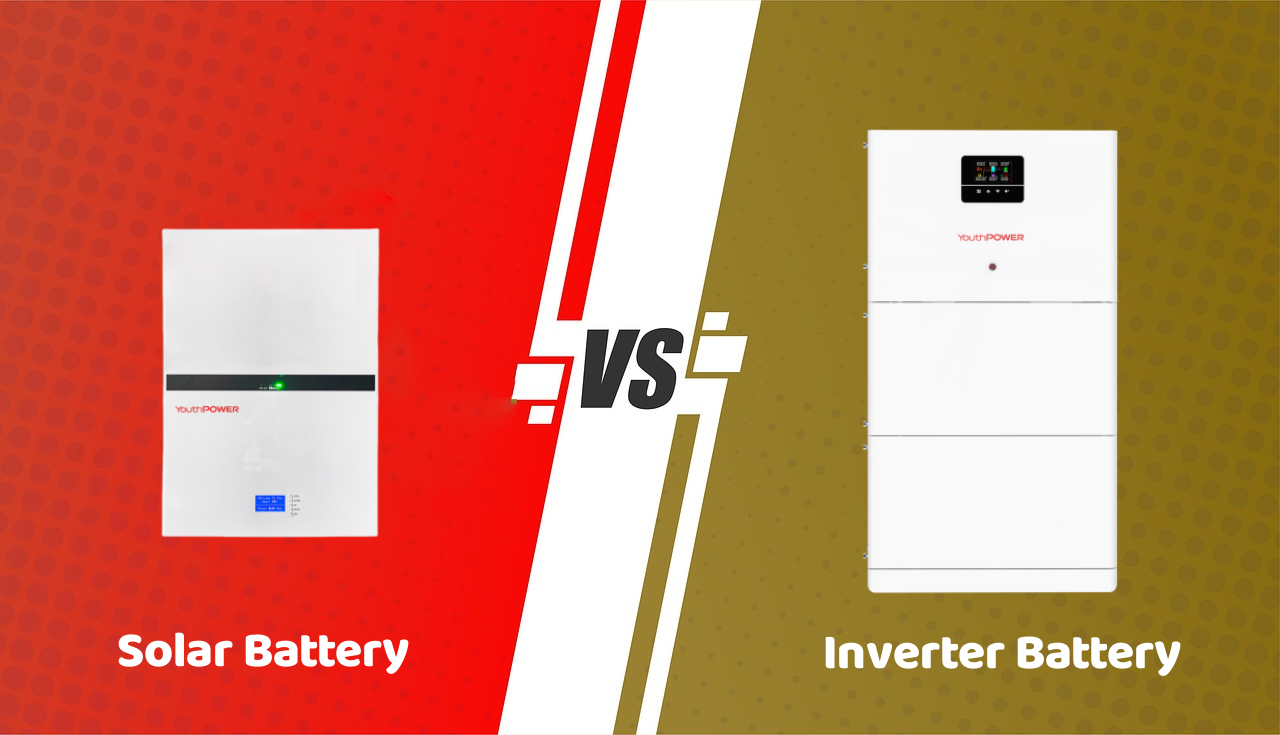A solar battery stores energy generated by solar panels. An inverter battery stores energy from solar panels, the grid (or other sources), to provide backup power during outages and is part of an integrated inverter-battery system. Understanding this crucial difference is crucial in setting up efficient solar or backup power systems.
1. What is a solar battery?
A solar battery (or solar rechargeable battery, solar lithium battery) is specifically designed to store electricity produced by your solar panels. Its primary function is to capture excess solar energy generated during the day and use it at night or during cloudy periods.
Modern lithium solar batteries, especially lithium ion solar batteries and LiFePO4 solar batteries, are often the best battery for solar panel setups due to their deep cycling capability, longer lifespan, and efficiency. They are optimized for the daily charge (battery charging from solar panel) and discharge cycles inherent in solar panel battery backup systems, making them ideal battery storage for solar power.
2. What is an inverter battery?
An inverter battery refers to the battery component within an integrated inverter and battery for home backup system (an inverter battery pack or power inverter battery pack). This household inverter battery stores energy from solar panels, the grid, or sometimes a generator to provide backup power when the main supply fails.

The system includes the power inverter, which converts the battery's DC power to AC for your home appliances. Key considerations for the best inverter battery for home include backup time and power delivery for essential circuits. This setup is also referred to as a battery backup power inverter, a house inverter battery, or an inverter battery backup.
3. Difference Between Solar Battery And Inverter Battery

Here's a clear comparison of their core differences:
| Feature | Solar Battery | Inverter Battery |
| Primary Source |
Stores energy generated by solar panels |
Stores energy from solar panels, the grid, or generator |
| Main Purpose | Maximize solar self-consumption; use solar day & night | Provide backup power during grid outages |
| Design & Chemistry | Optimized for daily deep cycling (80-90% discharge). Often lithium solar batteries | Often designed for occasional, partial discharges (30-50% depth). Traditionally lead-acid, though lithium options exist |
| Integration | Works with solar charge controller/inverter | Part of an integrated solar storage system |
| Key Optimization | High efficiency capturing variable solar input, long cycle life | Reliable instant power delivery for essential circuits during outages |
| Typical Use Case | Off-grid or grid-tied homes maximizing solar use | Homes/businesses needing backup power during blackouts |
Note: While distinct, some advanced systems, like an integrated solar inverter with battery, combine these functions using sophisticated batteries designed for both efficient solar charging and high-power inverter discharge. Choosing the right battery for inverter input or solar rechargeable batteries depends on the specific system design (inverter and battery for home vs. solar inverter and battery).
⭐ If you are interested in learning more about solar battery storage or an inverter battery, here's more information: https://www.youth-power.net/faqs/
